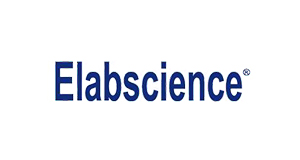Recombinant Mouse E-Cad protein (His tag)
Recombinant Mouse E-Cad protein (His tag)
SKU
ELSPDEM100065-100
Packaging Unit
100 µg
Manufacturer
Elabscience Biotechnology
Availability:
loading...
Price is loading...
Abbreviation: E-Cad
Target Synonym: AA960649;ARC-1;E-cad;Ecad;L-CAM;Um;UVO
Target Species: Mouse
Expression Host: E.coli
Fusion Tag: N-His
UNIProt ID: P09803
Background: Cadherins are calcium-dependent cell adhesion proteins which preferentially interact with themselves in a homophilic manner in connecting cells, and thus may contribute to the sorting of heterogeneous cell type. E-cadherin (E-Cad), also known as CDH1 and CD324, is a calcium-dependent cell adhesion molecule the intact function of which is crucial for the establishment and maintenance of epithelial tissue polarity and structural integrity. Mutations in CDH1 occur in diffuse type gastric cancer, lobular breast cancer, and endometrial cancer. In human cancers, partial or complete loss of E-cadherin expression correlates with malignancy. During apoptosis or with calcium influx, E-Cad is cleaved by the metalloproteinase to produce fragments of about 38 kDa (E-CAD/CTF1), 33 kDa (E-CAD/CTF2) and 29 kDa (E-CAD/CTF3), respectively. E-Cad has been identified as a potent invasive suppressor, as downregulation of E-cadherin expression is involved in dysfunction of the cell-cell adhesion system, and often correlates with strong invasive potential and poor prognosis of human carcinomas.
Sequence: Asp 157–Val 709
Purity: > 95 % as determined by reducing SDS-PAGE.
Formulation: Lyophilized from sterile PBS, pH 7.4.
Normally 5 % - 8 % trehalose, mannitol and 0.01% Tween80 are added as protectants before lyophilization.
Please refer to the specific buffer information in the printed manual.
Endotoxin: Please contact us for more information.
Target Synonym: AA960649;ARC-1;E-cad;Ecad;L-CAM;Um;UVO
Target Species: Mouse
Expression Host: E.coli
Fusion Tag: N-His
UNIProt ID: P09803
Background: Cadherins are calcium-dependent cell adhesion proteins which preferentially interact with themselves in a homophilic manner in connecting cells, and thus may contribute to the sorting of heterogeneous cell type. E-cadherin (E-Cad), also known as CDH1 and CD324, is a calcium-dependent cell adhesion molecule the intact function of which is crucial for the establishment and maintenance of epithelial tissue polarity and structural integrity. Mutations in CDH1 occur in diffuse type gastric cancer, lobular breast cancer, and endometrial cancer. In human cancers, partial or complete loss of E-cadherin expression correlates with malignancy. During apoptosis or with calcium influx, E-Cad is cleaved by the metalloproteinase to produce fragments of about 38 kDa (E-CAD/CTF1), 33 kDa (E-CAD/CTF2) and 29 kDa (E-CAD/CTF3), respectively. E-Cad has been identified as a potent invasive suppressor, as downregulation of E-cadherin expression is involved in dysfunction of the cell-cell adhesion system, and often correlates with strong invasive potential and poor prognosis of human carcinomas.
Sequence: Asp 157–Val 709
Purity: > 95 % as determined by reducing SDS-PAGE.
Formulation: Lyophilized from sterile PBS, pH 7.4.
Normally 5 % - 8 % trehalose, mannitol and 0.01% Tween80 are added as protectants before lyophilization.
Please refer to the specific buffer information in the printed manual.
Endotoxin: Please contact us for more information.

 Deutsch
Deutsch










